
Whatever you want from your Vietnam, Cambodia, Laos, Myanmar & Thailand tour, our travel advisors are ready to help you with 1:1 advice.
Call our local experts: +84913.000.858
Regrettably overshadowed by its more renowned neighboring countries, landlocked Laos continues to be a captivating gem within Southeast Asia. Situated amidst the turmoil of the two Indochina wars and isolated from the rest of the world for an extended period, this nation still exudes a serene and rustic allure, along with a remarkably relaxed and amiable culture. Here, we present our selection of the must-visit destinations for Laos classic holidays.
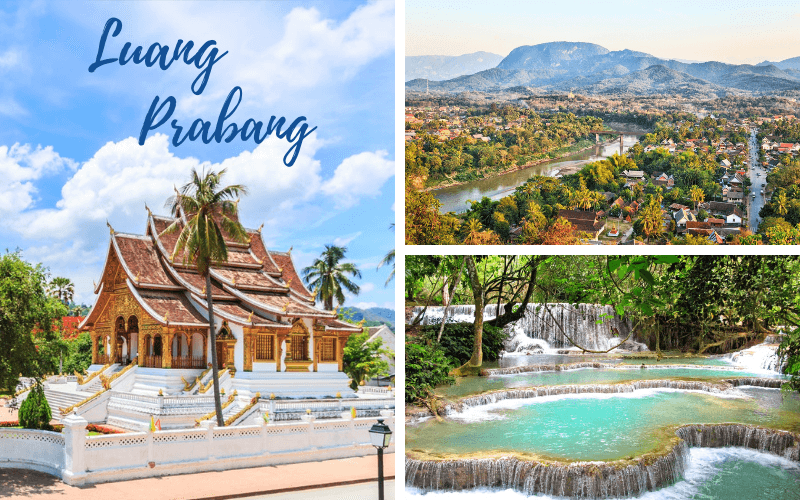
Luang Prabang
Luang Prabang, the former royal capital, holds a place of great intrigue, magic, and romance, making it one of the most captivating cities in Asia. This city has rightfully earned recognition as a UNESCO World Heritage Site. It is a true treasure trove, adorned with splendid ancient temples and adorned with serene streets graced by elegant colonial buildings.
Nestled between the majestic Mount Phu Si and the flowing Mekong River, the city’s centerpiece is the Royal Palace Museum. This museum offers a captivating glimpse into the history of the region, showcasing its rich heritage. A short distance southwest of the Royal Palace lies Wat Mai Suwannaphumaham, a remarkable temple dating back to the early 19th century. This sacred place was once the residence of the Sangkhalat, the supreme patriarch of Buddhism in Laos, adding to its historical significance.
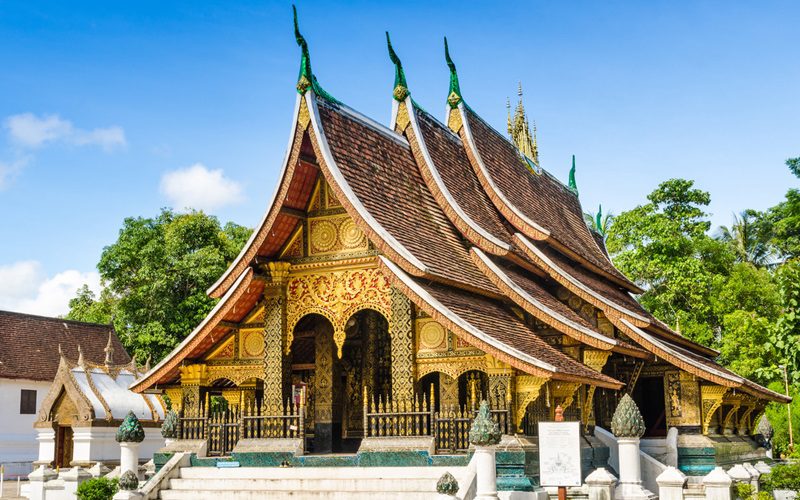
Wat Xieng Thong
Preserved from wars, fires, and excessive renovations, the jewel of temple-laden Luang Prabang boasts both elegance and historical significance. Positioned near the tip of the peninsula, overlooking the Mekong River, stands Luang Prabang’s most renowned temple, Wat Xieng Thong. This temple, characterized by its gracefully sweeping roofs, epitomizes the classic architectural style of Luang Prabang.
Stepping inside the sim, one’s gaze is drawn to the eight robust pillars adorned with intricate gold stenciling, guiding the eyes towards the serene golden Buddha images at the rear and upward to the roof adorned with dhamma wheels. On the exterior of the sim, at the rear, a captivating mosaic of the Tree of Life is masterfully crafted against a backdrop of deep red. Throughout the temple, the splendid combination of gold and deep red creates an atmosphere that exudes regal allure, captivating all who enter.
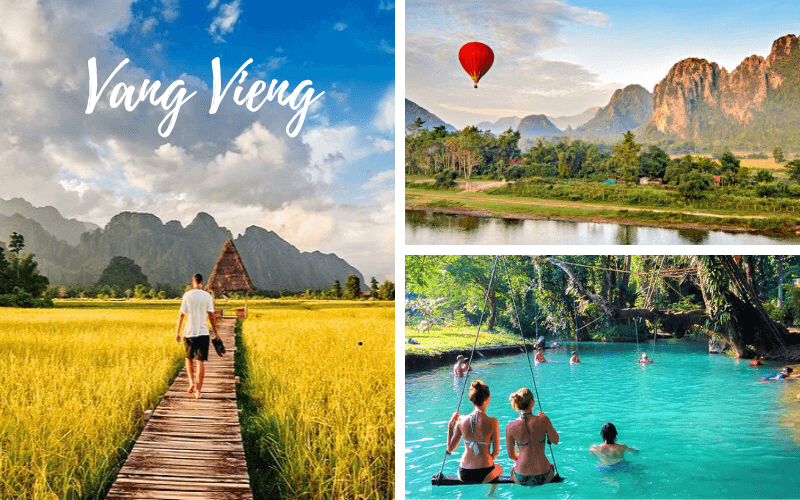
Vang Vieng
Situated conveniently between Vientiane and Luang Prabang, the charming village of Vang Vieng serves as an ideal stopover point for travelers journeying between these two towns. Nestled alongside the picturesque Nam Song River, amidst a breathtaking landscape adorned with limestone karsts, Vang Vieng initially gained popularity as a popular destination among backpackers.
However, it quickly earned a reputation as a vibrant party hub, reminiscent of Thai beach resorts, hosting lively full-moon celebrations that seemed transported to the heart of landlocked Laos. Presently, the primary allure lies in the surrounding countryside, and the town has transformed into an appealing and laid-back base for outdoor enthusiasts. Visitors can partake in activities such as rock climbing, cycling tours, kayaking, and other outdoor adventures while enjoying the pleasant ambiance of boutique accommodations and a variety of good dining options.
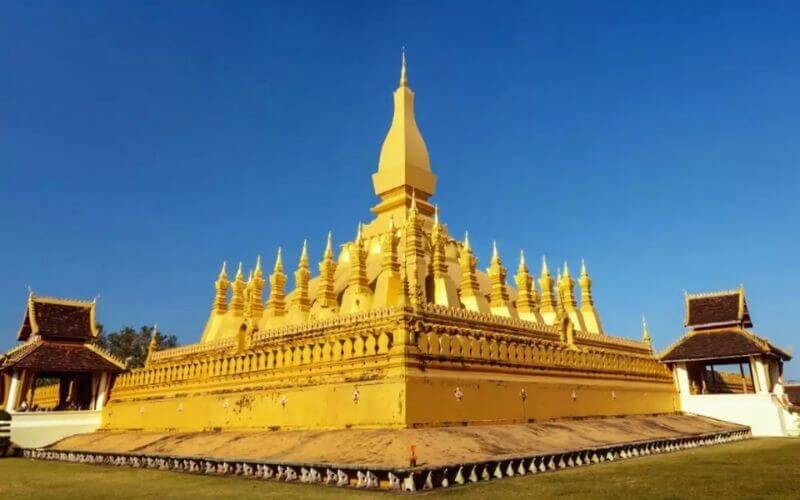
Pha That Luang – Laos
At sunset, the most significant religious edifice in the country reveals its true splendor, as the golden stupa radiates a captivating glow in the diminishing daylight. Pha That Luang holds immense spiritual significance for the Laos people, symbolizing their independence and sovereignty. It is a peculiar and exotic structure that seamlessly blends the elements of a Buddhist temple with the functional aspects of a fortress.
Even today, the grand monument maintains its fortress-like appearance. Enclosed within high walls, and adorned with tiny windows, it evokes the imagery of a medieval stronghold. Access is granted through elaborately gilded red-lacquer doors, further enhancing the impression of an ancient fortress. However, as one approach, the sacred essence of the structure becomes unmistakable, evident in the abundant religious symbolism and imagery that adorns its intricate details.
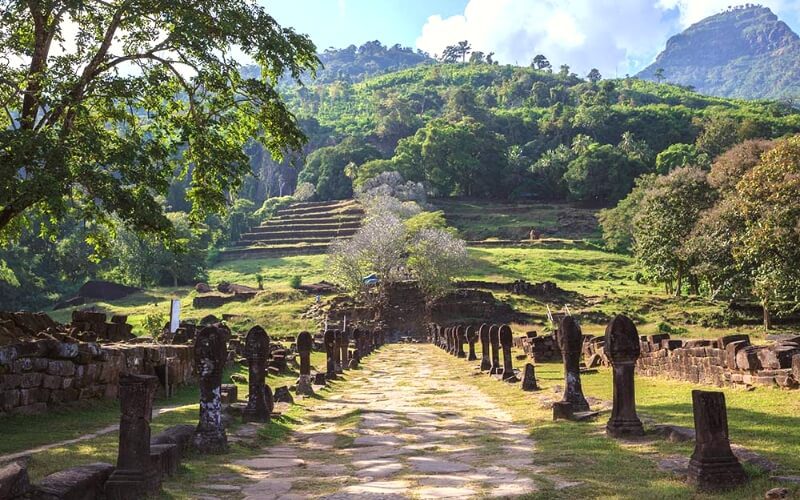
Wat Phou
Standing as the most evocative Khmer ruin beyond the borders of Cambodia, this sprawling mountainside complex traces its origins from the sixth to twelfth centuries. The awe-inspiring complex of Wat Phou, meaning “Mountain Temple,” rests upon a site that has held sacred significance for at least three distinct cultures. Central to the attraction of this location for these civilizations is the uniquely shaped mountain known as Phu Pasak, which rises majestically behind the temple.
Upon entering the complex, one encounters the remnants of palaces constructed by the Champasak royalty during the waning years of their dynasty. These palaces provided a vantage point from which the rulers observed the annual festivities held during the full moon of the third lunar month. A grand promenade, aligned in an east-west direction, leads visitors between two rectangular baray, or bathing ponds, and guides them towards the base of the middle level, setting the stage for further exploration.
Planning a trip to Laos in June? You’re in for an adventure like no other! While some may shy away from travelling…
Bun Bang Fai, or the Rocket Festival of Thailand and Laos, is one of the most unique and vibrant cultural festivals in…
Thinking of visiting Laos in May? As the country transitions from the dry season to the lush monsoon season, May brings a…